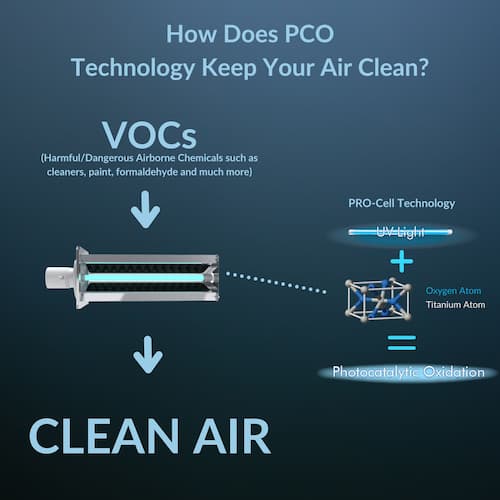Volatile organic compounds (VOCs) are harmful gases emitted from various household products and materials, such as cleaning agents, paints, and carpets, among others. Exposure to VOCs can cause a range of health problems, including respiratory problems, headaches, and even cancer. In this blog post, we will discuss some effective ways to remove VOCs from your home . According to the United States Environmental Protection Agency (EPA), indoor air quality can be worse than outdoor air quality, and levels of some pollutants, including VOCs, can be 2-5 times higher indoors than outdoors. Additionally, the World Health Organization (WHO) estimates that up to 50% of indoor air pollution can be attributed to VOCs.
- Increase Ventilation

One of the easiest ways to reduce VOCs in your home is to increase the amount of ventilation. Opening your windows and doors allows fresh air to circulate, which helps to dilute the concentration of VOCs in your home’s air. However, leaving windows and doors open may not be a solution you can implement consistently. You can also use exhaust, attic, or whole house fans to circulate the air. These fans pull air out of or through the living space, diluting the concentrations of VOCs.
- Use Air Purifiers with PCO Technology and Carbon Filtration Designed to Remove VOCs
Air purifiers with PCO (Photocatalytic Oxidation) and activated carbon are effective at removing VOCs that may be present in your home. PCO (Photocatalytic Oxidation) is a technology used for indoor air purification that is gaining popularity due to its high efficiency and effectiveness in removing the various types of air pollutants that can cause harm.
What is PCO Technology?
PCO technology is an air purification method that uses UV light and a photocatalyst to break down and destroy pollutants in the air. The process involves a photocatalyst, typically titanium dioxide (TiO2), which is activated by UV light to produce highly reactive free radicals. These free radicals react with pollutants in the air, breaking them down into harmless carbon dioxide and water.
What is Activated Carbon?
Activated carbon is an effective material for removing some volatile organic compounds (VOCs) from the air. Activated carbon is an exceptionally porous material with a large surface area, which allows it to efficiently absorb and trap pollutants such as VOCs. However, it's important to note that activated carbon may not be effective at removing all types of VOCs, such as formaldehyde.
To remove the largest quantity of VOCs from the air, it is best to get an air purifier with both PCO plus activated carbon and then place the air purifier in the room where you spend the most time, such as the bedroom or living room.
- Choose Low-VOC Products
When shopping for household products, choose those products with low VOC levels. Look for products that say "low-VOC" or "no-VOC" on the packaging. These products are formulated with fewer or no harmful chemicals, which helps to reduce the concentration of VOCs in your indoor air. The types of products that may contain VOCs are:
- Paints, varnishes, and lacquers
- Cleaning products, such as air fresheners, disinfectants, and degreasers
- Adhesives and glues
- Solvents, such as nail polish remover and paint thinner
- Pesticides and insecticides
- Personal care products, such as hair spray, perfume, and deodorant
- Building materials, such as carpeting, vinyl flooring, and particleboard
You may want to consider natural alternatives, such as vinegar and baking soda, which is an effective and safe alternative to harsh chemicals.
- Store Products Properly
Store household products properly to prevent VOCs from escaping into your indoor air. Keep products in their original containers and store them in a well-ventilated area, such as a garage or outdoor storage unit. Avoid storing products in areas with high temperatures or humidity, as this can increase the release of VOCs.
- Use Plants to Remove VOC
Plants are not only great for adding beauty to your home, but they can also help to remove VOCs from your indoor air. There are plants, such as spider plants, peace lilies, and Boston ferns, which are highly effective at removing VOCs from the air. Place plants throughout your home to help clean the air.
In conclusion, removing VOCs from your home is important for maintaining quality indoor air and ensuring good health. By increasing ventilation, using air purifiers, choosing low-VOC products, storing products properly, and using plants, you can effectively reduce the concentration of VOCs in your indoor air. Add these strategies to your daily life and create a safer and healthier home.
 US Dollars
US Dollars
